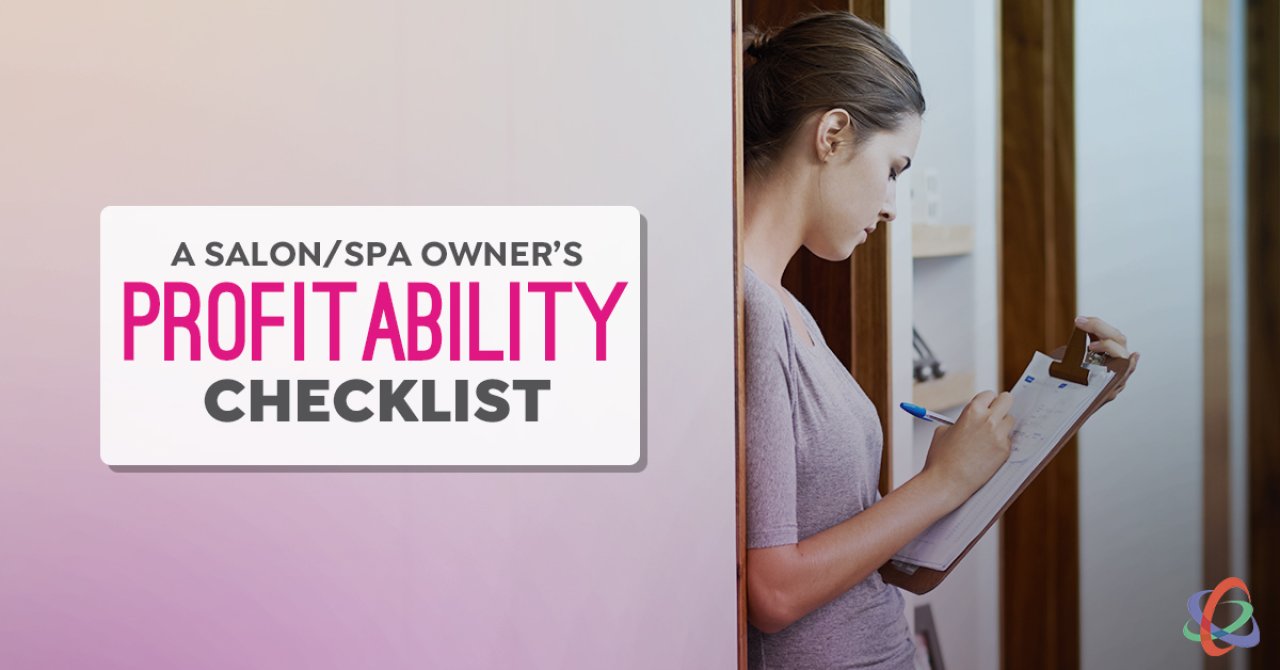A Salon/Spa Owner’s Profitability Checklist

Many salon/spa owners are not overly fond of numbers, but all owners want and love profit.
There’s nothing more stressful than attempting to operate a salon/spa that is perpetually short of cash and struggling to be profitable.
It’s one thing to get behind on bills, rent and barely make payroll. Getting behind on payroll taxes is where things get just plain ugly.
Going into more debt to plug leaks, that were never managed in the first place, is as dangerous as it is unsustainable. Trying to pay off yesterday’s bad decisions with today’s cash flow is a ticking time bomb.
So, to give all owners a dose of financial reality, I put together the following 13-point profitability checklist:
- Can you read and understand every line item on your financial reports? This includes your Balance Sheet, Income Statement, and Statement of Cash Flows. If not, what’s your plan to learn how? This is non-negotiable.
- How often should you receive complete financial reports on your company? If it’s not at least monthly (that’s only twelve sets of financials a year) it’s not often enough. At Strategies, we’ve been running weekly financial reports for almost 25 years.
- How much time lapses from the end of the month until you receive your financial reports? If this exceeds two weeks, it’s too long. Find out why and address it. If you have a bookkeeper, there’s no excuse not to have timely reports within days after the end of the month. Any good in-house accounting software and a competent bookkeeper should be able to produce timely weekly financials. This is non-negotiable.
- Do you have a cash-flow plan that guides your revenue targets and expense budgets? If not, why not? Financial reports tell you the score during and after the game ends. Your cash-flow plan is your financial playbook. Follow the plan, be fiscally responsible, and your financial reports will improve. You cannot grow a business without following a cash-flow plan. This is non-negotiable. The plan is simply a “best guess.” The more you do it and work your plan, the better you can predict the future.
- Do you live your cash-flow plan and budget? Living your cash-flow plan means using it to make all financial and spending decisions. No sense creating a budget if the discipline to follow it isn’t embedded in your leadership thinking.
- Do you have weekly cash-flow planning meetings? If not, why not? Having a cash-flow plan is pointless without comparing it to actual revenues and expenses. Are you over or behind projections? Why? What do you need to do today or over the next week to correct or get back on track? This is why I prefer weekly over monthly financials. I don’t want to find at the end of the month that we were overspending mid-month.
- Do employees know the score? If your response to, “Hey boss, how’re we doing?” is “Not good enough,” the people doing the work have no idea where the salon/spa is at or what they need to do to make it better.
- Does your company require “purchase orders” to control spending? A purchase order is simply a list of what’s being purchased and the total cost. The total cost of the order is either within budget or over budget and needs to be reduced.
- Is your payroll percentage under control? What is the ideal target payroll percent for your salon/spa? What will it take to achieve this? Is your pay system overdue for an overhaul?
- Do you know your “cost per hour” for services? How do you know if your services are priced right if you don’t know the cost? The only way for a service business to be profitable is having a realistic profit margin on your cost per hour to arrive at the optimum selling price. Sadly, most owners don’t know how to calculate their cost per hour. If you’re one of them, contact us at Strategies.
- Are your inventory levels under control? Money that’s tied up in excess inventory is a cash drain. What’s the plan to get inventory under control?
- Are you turning your inventory as often as you need to? Slow inventory turns in retail kills cash flow. Inventory should turn four to six times a year or more.
- As the leader of your salon/spa, are you setting the right example to create a fiscally responsible business culture? If not, why not?
Here’s my challenge to you: There is no debating that the profitability begins with the right leadership thinking, disciplines and culture. It cannot be faked or given lip service. Salon/spa owners must live it, inspire it and relentlessly build a fiscally responsible culture to support it.
So, use this checklist to identify what financial disciplines are missing in your leadership and your salon/spa. If your reaction to the checklist gets you more stressed, talk to us at Strategies. We’re well versed at helping owners make sense of all this stuff and to discover what it’s like to lead a profitable business.
Comments
No comments found. Start the conversation!
Leave a Comment